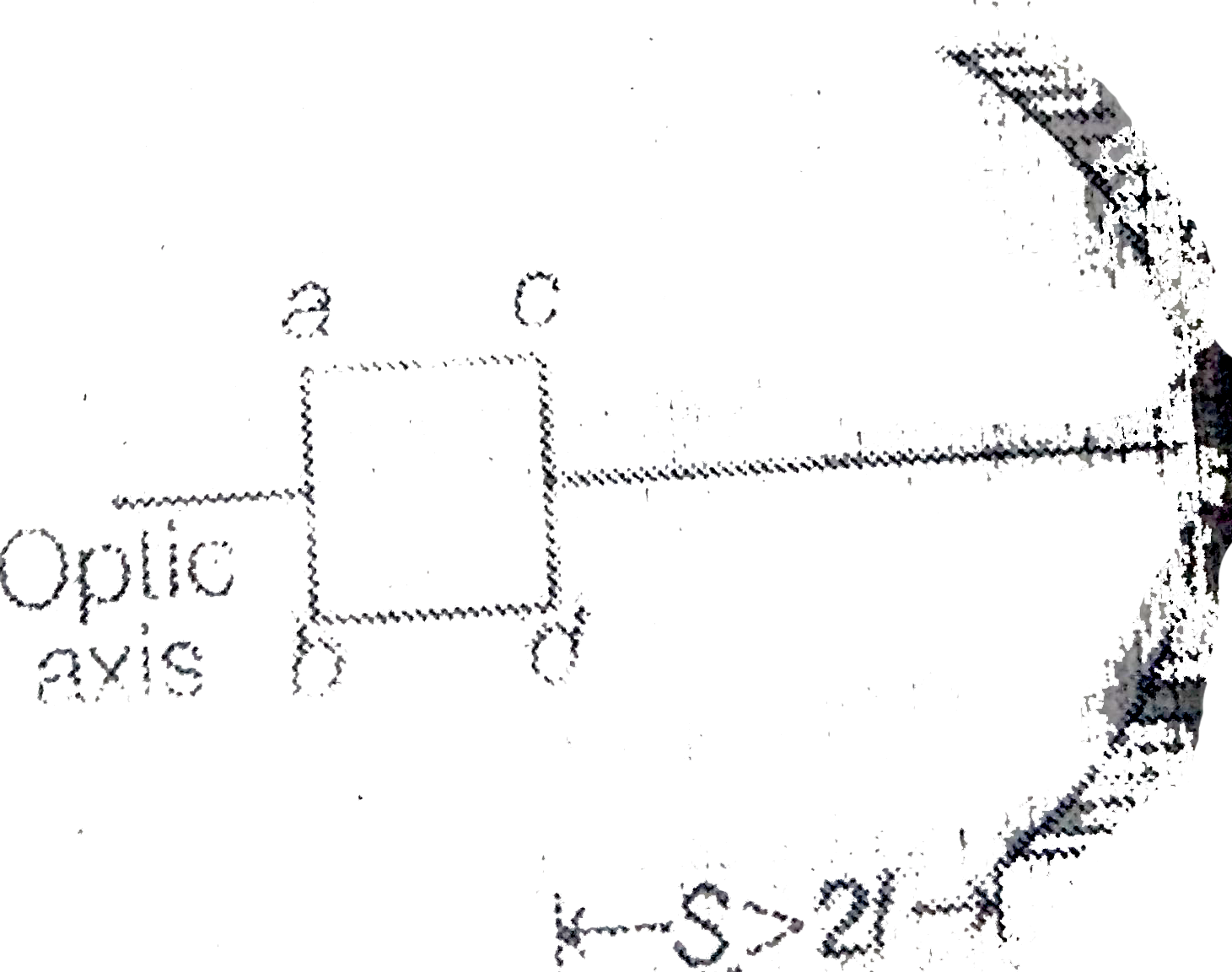An object is kept in front of a concave mirror of focal length 15 cm. The image formed is three times the size of the object. Calculate the two possible distances of the object from the mirror.
To solve the problem of finding the two possible distances of the object from a concave mirror with a focal length of 15 cm, where the image formed is three times the size of the object, we will use the mirror formula and the magnification formula.
1. Identify the Given Values:
- Focal length (f) of the concave mirror = -15 cm (negative because it is a concave mirror).
- Magnification (m) = 3 (the image is three times the size of the object).
2. Case 1: Virtual Image
- For a virtual image, the magnification is positive, thus:
m=h′h=−vu⟹3=−vu
This gives:
v=−3u
3. Apply the Mirror Formula:
- The mirror formula is given by:
1f=1v+1u
- Substituting the values:
1−15=1−3u+1u
- Finding a common denominator (which is -3u):
1−15=−1+33u=23u
4. Cross-multiply to solve for u:
- Rearranging gives:
2=−3u15
- Simplifying:
2=−u5⟹u=−10 cm
- The object is located 10 cm in front of the mirror.
5. Case 2: Real Image
- For a real image, the magnification is negative, thus:
m=−3⟹−3=−vu⟹v=3u
6. Apply the Mirror Formula Again:
- Using the mirror formula:
1−15=13u+1u
- Finding a common denominator (which is 3u):
1−15=1+33u=43u
7. Cross-multiply to solve for u:
- Rearranging gives:
4=−3u15
- Simplifying:
4=−u5⟹u=−20 cm
- The object is located 20 cm in front of the mirror.
Final Answers:
- The two possible distances of the object from the mirror are:
- 10 cm (for virtual image)
- 20 cm (for real image)
- Focal length (f) of the concave mirror = -15 cm (negative because it is a concave mirror).
- Magnification (m) = 3 (the image is three times the size of the object).
- For a virtual image, the magnification is positive, thus:
m=h′h=−vu⟹3=−vu
This gives:
v=−3u
- The mirror formula is given by:
1f=1v+1u
- Substituting the values:
1−15=1−3u+1u
- Finding a common denominator (which is -3u):
1−15=−1+33u=23u
- Rearranging gives:
2=−3u15
- Simplifying:
2=−u5⟹u=−10 cm
- The object is located 10 cm in front of the mirror.
- For a real image, the magnification is negative, thus:
m=−3⟹−3=−vu⟹v=3u
- Using the mirror formula:
1−15=13u+1u
- Finding a common denominator (which is 3u):
1−15=1+33u=43u
- Rearranging gives:
4=−3u15
- Simplifying:
4=−u5⟹u=−20 cm
- The object is located 20 cm in front of the mirror.
- The two possible distances of the object from the mirror are:
- 10 cm (for virtual image)
- 20 cm (for real image)
Similar Questions
An object is placed 40 cm from a concave mirror of focal length 20 cm. The image formed is
View SolutionAn object is at 20 cm from a concave mirror of focal length 10 cm, the nature of image is
View SolutionAn object is placed at 20 cm from a convex mirror of focal length 10 cm. The image formed by a mirror is
View SolutionFind the distance of object from a concave mirror of focal length 10 cm so that image size is four time the size of the object.
View SolutionFind the distance of object form a concave morror of focal length 10 cm so that image size is four times the size of the object.
View SolutionAn object of height 20 cm is kept at a distance of 48 cm in front of a concave mirror of focal length 12 cm. If the mirror forms a virtual, diminished image of the object then calculate the distance of the image from the mirror.
View SolutionAn object is placed in front of a concave mirror of focal length f as shown in figure. Choose the correct shape of the image.

View SolutionAn object placed in front of a concave mirror of focal length 0.15 m produces a virtual image, which is twice the size of the object. The position of the object with respect to the mirror is
View SolutionA concave mirror of focal length f produces a real image n times the size of the object. What is the distance of the object from the mirror?
View SolutionAn object is placed at 6 cm distance in front of a concave mirror of focal length 4 cm.
What will be the nature of the image?
View Solution
